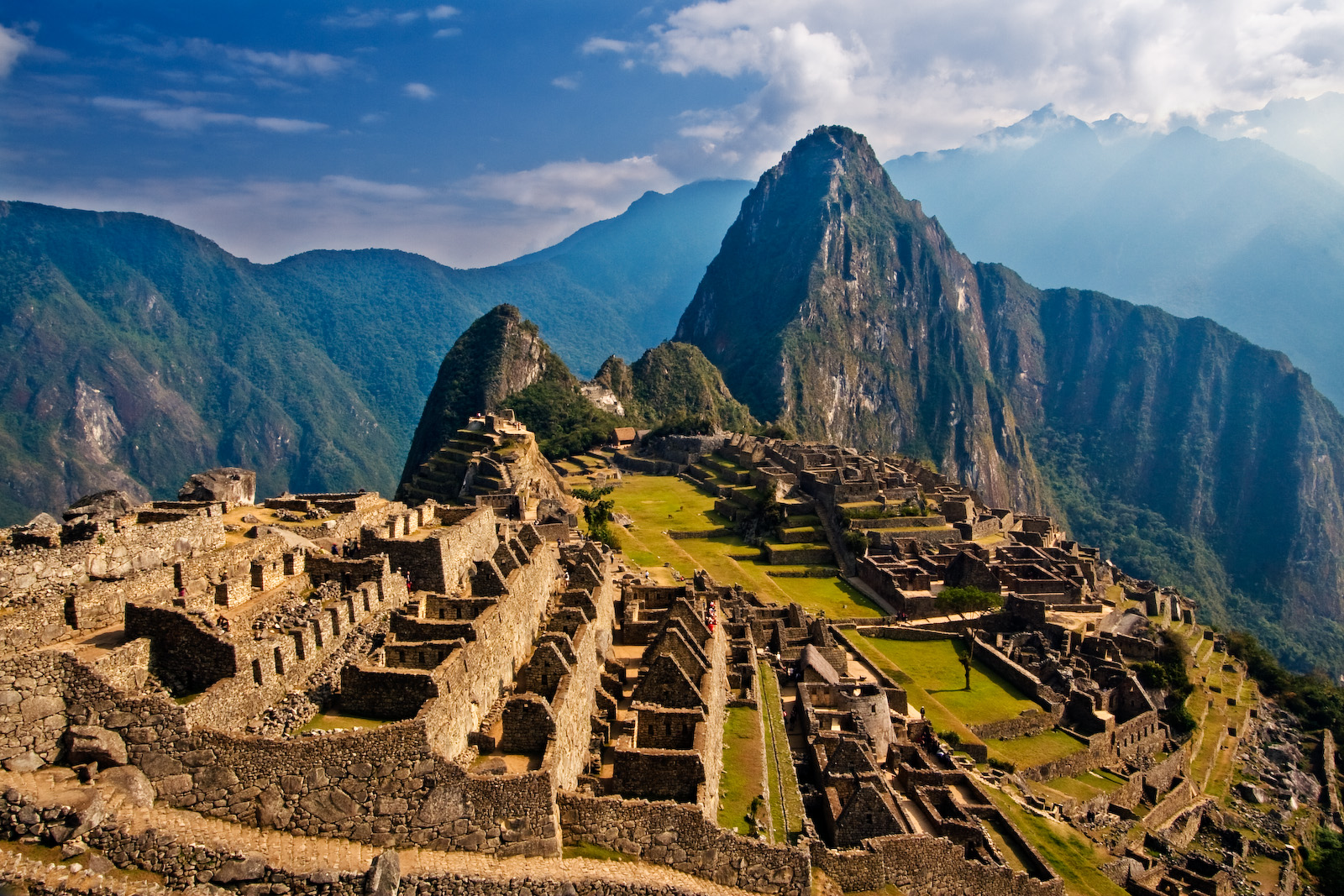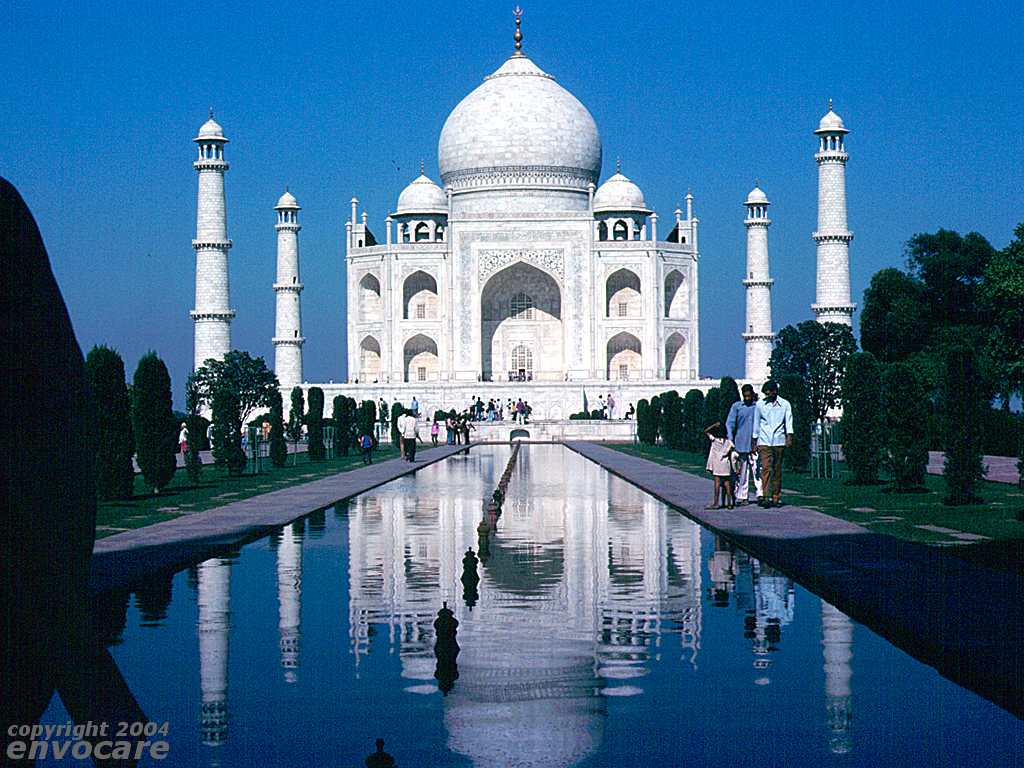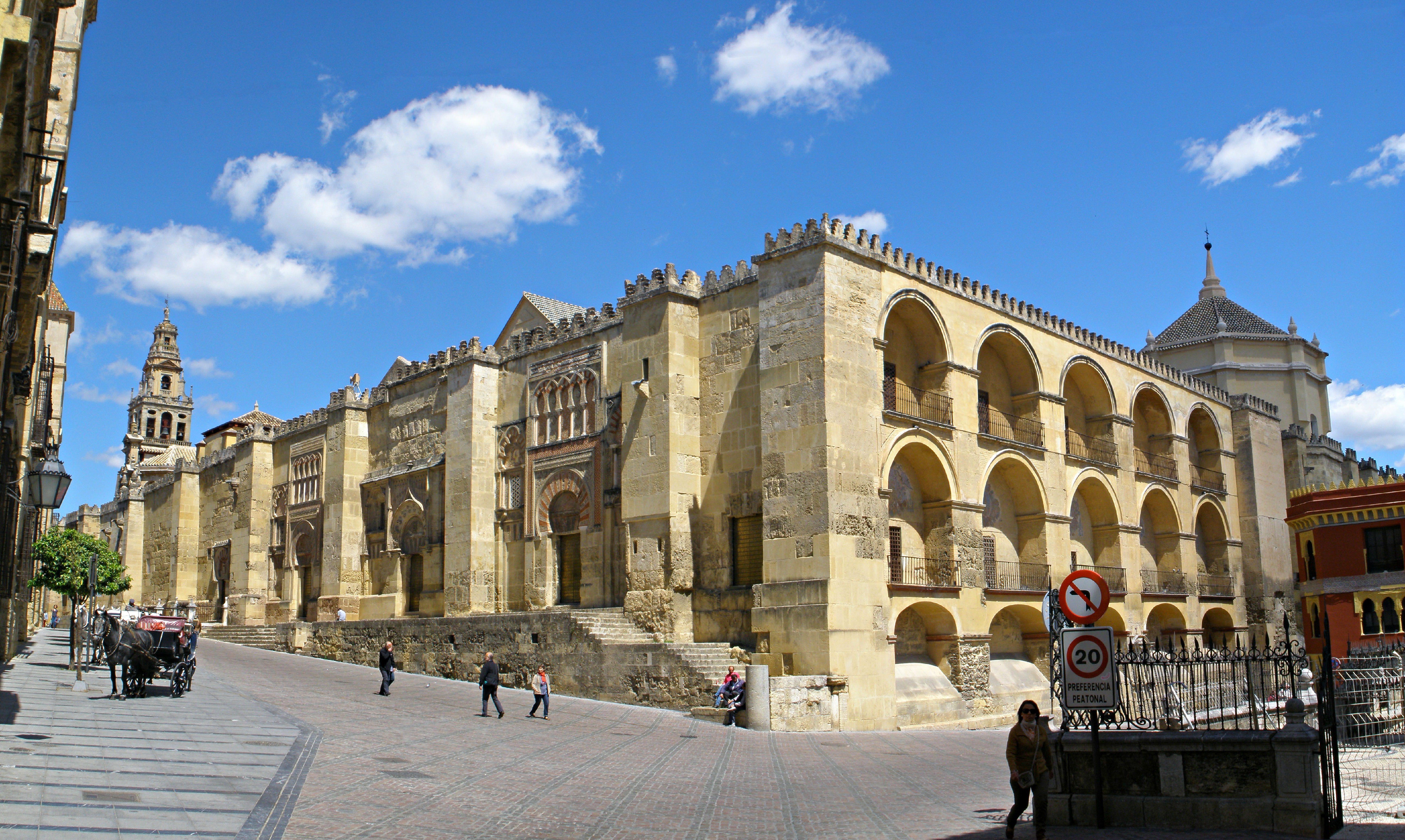Samantha: The information you provided in your blog was very informative and clear. I learned some new facts based upon your blog. Also, I enjoyed your video you chose considering in provided one with further information on mayan architecture.
Tara: I liked the images you chose to demonstrate the Olmecs style. Those huge heads were so heavy I cannot believe they each weighed 40-50 tons! Also, I enjoyed the image you selected for the building for your modern application, the architecture was interesting.
Friday, February 27, 2015
Thursday, February 26, 2015
The Americas
The coming together of the Americas consisted of four ancient civilizations known as the Olmecs, Mayans-Toltecs, the Aztecs, and the Incas. The cultures focused on nobles and commoners, divine rights, farming, sporting events, and hereditary leadership. Religion was a big factor, the people had ceremonial centers, which were the nuclei of Mesoamerican settlement. The temples provided spatial orientation for the town, and the pyramids were meant to stand out and represent the gods and powers of the region. Human sacrifice was also a very big part of the culture.
The Olmecs were the first major civilization in Mexico. There were called the "people of the rubber country," and they developed hieroglyphic writing. They also invented the first calendar of the Western hemisphere. They included realistic artwork throughout their design and accented with a lot of jade. A famous site built by these people is known as La Venta. This was the first example of the temple focused city type. The ceremony center composed of: the great pyramid of earth,ball court, smaller pyramids, burial grounds and giant stone heads.
These giant stone heads that were within this site weighed between 40-50 tons!
Another magnificent architectural site was known an Teotihuacan, "Place of the gods." There was a ceremonial center that ran two miles in length, with a central spine known as the "road of the dead." There was also a temple of the feathered serpent and the pyramid of the sun and one as well for the moon. The city was laid out in a grid form and there were not walls around the site to show a sign of a powerful society without enemies.
The Mayans were the second civilization to come about in the years from 300B.C.-1521 A.D. This society for 1,800 years nut were later destroyed by the spanish conquest of 1519. This area occupied highlands and the lowlands. Chichen Itza was the architectural site built by the Mayans and this ceremonial site on particular meant "mouth of the well of the Itza." included with a four sided pyramid called "Castillo." There was also a chacmool (ritualistic furniture) and jaguar throne within the site.
The Aztecs were the third civilization to be discovered. They used a creation of art expression through thoughts on life. The architecture expressed thoughts and beliefs accompanied by floating gardens. The civilization rivaled Rome and the population grew from 500,000 to over 3 million until it was conquered by Spain in 1520. An architectural site built by the Aztecs known as the Templo Mayor.
Templo Mayor

Another part of the Aztecs culture was their brilliant idea for agricultural systems. They were called Chinampas which were raised gardening beds located in swamps or shallow lakes. They may have been the most productive agricultural design ever developed by humans, and the growers were able to get up to 7 harvests per year from a single bed.
The last civilization were known as the Incas, which was the largest empire in Pre-Columbia America. They were known for their architecture and was located on the pacific coast and moutons. There was a lot of climate variations in this area and it was the capital of Cuzco. They were also the masters of stone cutting and used a lot of trapezoid shapes within their designs.

This architectural site that was built in this time was known as Machu Picchu. it was located in a seismically unstable area and was built without mortar. It was a royal estate for the Incan emperor Pachacuti with trapezoid openings. This was never discovered by the Spanish but was later discovered in 1911 by the American professor Bingham.
The Olmecs were the first major civilization in Mexico. There were called the "people of the rubber country," and they developed hieroglyphic writing. They also invented the first calendar of the Western hemisphere. They included realistic artwork throughout their design and accented with a lot of jade. A famous site built by these people is known as La Venta. This was the first example of the temple focused city type. The ceremony center composed of: the great pyramid of earth,ball court, smaller pyramids, burial grounds and giant stone heads.
These giant stone heads that were within this site weighed between 40-50 tons!
Another magnificent architectural site was known an Teotihuacan, "Place of the gods." There was a ceremonial center that ran two miles in length, with a central spine known as the "road of the dead." There was also a temple of the feathered serpent and the pyramid of the sun and one as well for the moon. The city was laid out in a grid form and there were not walls around the site to show a sign of a powerful society without enemies.
The Mayans were the second civilization to come about in the years from 300B.C.-1521 A.D. This society for 1,800 years nut were later destroyed by the spanish conquest of 1519. This area occupied highlands and the lowlands. Chichen Itza was the architectural site built by the Mayans and this ceremonial site on particular meant "mouth of the well of the Itza." included with a four sided pyramid called "Castillo." There was also a chacmool (ritualistic furniture) and jaguar throne within the site.
The Aztecs were the third civilization to be discovered. They used a creation of art expression through thoughts on life. The architecture expressed thoughts and beliefs accompanied by floating gardens. The civilization rivaled Rome and the population grew from 500,000 to over 3 million until it was conquered by Spain in 1520. An architectural site built by the Aztecs known as the Templo Mayor.

Templo Mayor

Another part of the Aztecs culture was their brilliant idea for agricultural systems. They were called Chinampas which were raised gardening beds located in swamps or shallow lakes. They may have been the most productive agricultural design ever developed by humans, and the growers were able to get up to 7 harvests per year from a single bed.
The last civilization were known as the Incas, which was the largest empire in Pre-Columbia America. They were known for their architecture and was located on the pacific coast and moutons. There was a lot of climate variations in this area and it was the capital of Cuzco. They were also the masters of stone cutting and used a lot of trapezoid shapes within their designs.

This architectural site that was built in this time was known as Machu Picchu. it was located in a seismically unstable area and was built without mortar. It was a royal estate for the Incan emperor Pachacuti with trapezoid openings. This was never discovered by the Spanish but was later discovered in 1911 by the American professor Bingham.
Sunday, February 22, 2015
Gothic Peer Review
Emma: I liked the use of pictures you used to display the style of architecture during this era. I also liked your modern application of that tracery it was very interesting.
Mackenzie: I enjoyed looking at your examples of the pictures you chose for the modern applications. I also liked how you explained how lighting played well with large airy spaces!
Mackenzie: I enjoyed looking at your examples of the pictures you chose for the modern applications. I also liked how you explained how lighting played well with large airy spaces!
Saturday, February 21, 2015
Gothic
Gothic: 1140-1500
·
Paris was the center of the Gothic world and churches were the center of city life. New revivals formed between city, states, and nations. There was a lot of competition in the conduction of cathedrals. Knighthood, chivalry, and artisan guilds were a part of this era. The black plague killed 75 million people, which was nearly 1/3 of the population. Within the design there was a lot of religious expression. The wealth and power was in the church so large numbers were required so the worship spaces had to be very large. The architecture in this era was the bridge to romanesque to renaissance. The gothic era was then birthed from the romanesque era. This is when the introduction came about of the pointed arch, ribbed vault, and the flying buttress.
This is Notre Dame at Chartes,1145-1220. This is where the introduction of the flying buttress came along.
This is the Notre Dame at Paris, 1163-1345. I love the architecture of this building.
One of my favorite buildings of this time period was Wells Cathedral. The structure of the exterior of the building is magnificent and displays examples really well of the type of design in this era.
This is a current application I found that displays the different design motifs incorporated within gothic design. The use of the black iron on the head and foot board thoroughly shows the style from this period.
i also found this current application useful to this era considering that the style of the this furniture resembles design mortif of the Gothic era.
Listed below is a youtube link to examples of gothic architecture :https://www.youtube.com/watch?v=t8g1e-JLrhM
Sunday, February 15, 2015
Islamic and Romanesque Peer Reviews
Sammy: After reviewing your blog on the Romanesque era I learned a lot of facts about this time period based on the information you provided. Also, I enjoyed the picture you used to show the type of art work painted on the arches and vaults.
Cally: Your blog on the Romanesque era provided us with a lot of helpful information that furthered my knowledge on this period. I enjoyed your pictures of your current applications to display this style, they were very accurate.
Mckenzie: Your modern applications displaying Islamic design were absolutely great! I loved the details within each pictures to display the type of design motifs and elegance to the Islamic era.
Katie K: After reviewing your blog I really enjoyed looking the pictures you selected to show the architectural structures of the arches and domes. Also, I liked the paintings on the domes to show Islamic design .
Cally: Your blog on the Romanesque era provided us with a lot of helpful information that furthered my knowledge on this period. I enjoyed your pictures of your current applications to display this style, they were very accurate.
Mckenzie: Your modern applications displaying Islamic design were absolutely great! I loved the details within each pictures to display the type of design motifs and elegance to the Islamic era.
Katie K: After reviewing your blog I really enjoyed looking the pictures you selected to show the architectural structures of the arches and domes. Also, I liked the paintings on the domes to show Islamic design .
Wednesday, February 11, 2015
Islamic
During this era Mohammed is the figure-head of the Islamic religion. Islamic Religion was actually the foundation of Islamic Design. This design motif was spread through Africa, Europe, and Asia, so there was a great variety in design according to the region. The mosque was the central facility for prayer and worship. The features of a mosque were perimeter wall, covered hall of columns, and a courtyard. The purpose of going to the mosque was a place for people to come and pray to God by kneeling on a carpet and facing the Mecca.


One of the greatest Mosques in my opinion was the Mosque of Sultan Ahmed, also known as the "Blue Mosque". This building consisted of one main dome, six minarets, and eight secondary domes. The patterns in the architecture were very geometric rather than being realistic. This mosque is located in Istanbul, Turkey. There were over 20,000 hand made tiles and over 50 different tulip designs with 200 stained glass windows. The walls looked like carpets.

Another incredible mosque during this era was the Taj Mahal. The building consisted of a white domes marble mausoleum and was seen as an earthy replica of the house of Mumtaz in paradise. This architectural site is said to display Mughal architecture the best. The minarets are each more than 40 meters tall to show the designers penchant for symmetry.
.jpg)

A final incredible Mosque was the Great Mosque of Cordoba. It was prayer hall and used the Hypostyle architectural design in its layout.

A great current application I found to display Islamic design would have to be this restaurant. It really shows off the ogivail arches in the ceiling design.

Anoher current application I found was of this interior of a high end residential home. It displays the use of the horseshoe domes in the bookcase, and also incorporated the geometric patterned tiles within the borden lining the ceiling.
Below is a link to watch a video clip on the art of Islamic Pattern in Istanbul:
https://www.youtube.com/watch?v=2ZheZfhpf9g

One of the greatest Mosques in my opinion was the Mosque of Sultan Ahmed, also known as the "Blue Mosque". This building consisted of one main dome, six minarets, and eight secondary domes. The patterns in the architecture were very geometric rather than being realistic. This mosque is located in Istanbul, Turkey. There were over 20,000 hand made tiles and over 50 different tulip designs with 200 stained glass windows. The walls looked like carpets.

Another incredible mosque during this era was the Taj Mahal. The building consisted of a white domes marble mausoleum and was seen as an earthy replica of the house of Mumtaz in paradise. This architectural site is said to display Mughal architecture the best. The minarets are each more than 40 meters tall to show the designers penchant for symmetry.
.jpg)

A final incredible Mosque was the Great Mosque of Cordoba. It was prayer hall and used the Hypostyle architectural design in its layout.

A great current application I found to display Islamic design would have to be this restaurant. It really shows off the ogivail arches in the ceiling design.

Anoher current application I found was of this interior of a high end residential home. It displays the use of the horseshoe domes in the bookcase, and also incorporated the geometric patterned tiles within the borden lining the ceiling.
Below is a link to watch a video clip on the art of Islamic Pattern in Istanbul:
https://www.youtube.com/watch?v=2ZheZfhpf9g
Subscribe to:
Comments (Atom)







